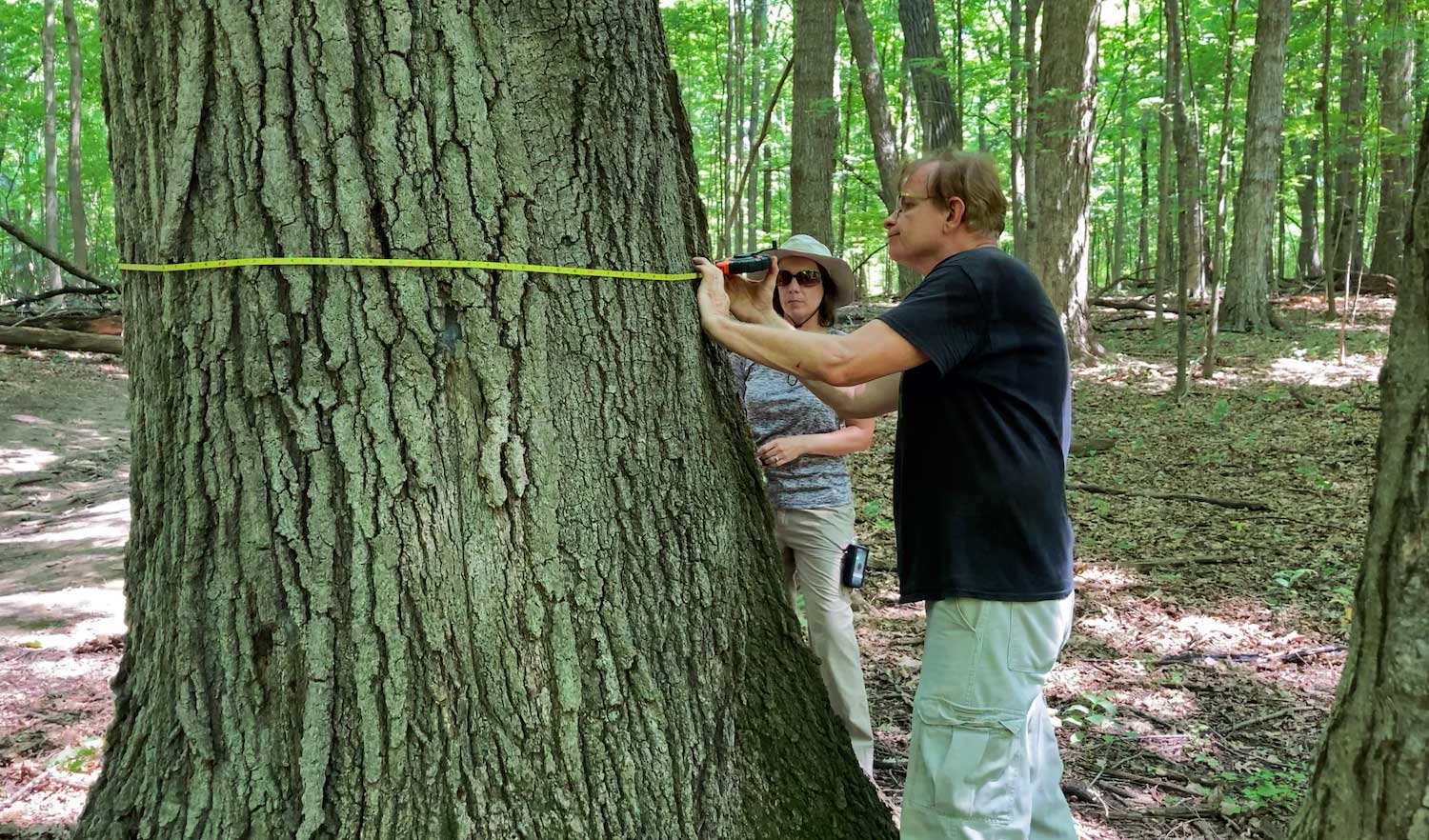How to tell how old a tree is — without cutting it down

As a kid, you probably learned that you can tell how old a tree is by counting the rings within its trunk, and it's true that you can age a tree using this process. There's just one problem with this method, though. You have to cut a tree down to do it, or at the very least limit yourself to learning how old trees are that have already been cut down.
Luckily there's a way to estimate a standing tree's age without causing any damage to the tree, and all it requires is some basic measuring, knowledge of the tree species and a calculator. Once you know what kind of tree you are trying to determine the age of, the first step is to measure the circumference of the tree's trunk, which you can easily do with a measuring tape. Simply wrap the measuring tape all the way around the trunk at a height of 4 1/2 feet above ground, according to Purdue University. For the sake of example, let's say we are trying to determine the age of a white oak with a circumference of 3 feet, 5 inches. Once you know the circumference in feet and inches, convert it to inches only. In this case, our white oak has a circumference of 41 inches.
Now that we know the circumference of the tree trunk, we will need to calculate the diameter. To do this, you divide the circumference (41 inches in our example) by pi, which is 3.14. So in our case, the diameter of the tree trunk is 13.05 inches.
Using the diameter, we can determine the approximate age of the tree by multiplying it by the growth factor, which is why knowing the species is important. Growth factor varies by species, and it is most accurate for trees growing in a woodland environment rather than an urban area, according to Treehugger.
In our example, we are using a white oak, which has a growth factor of 5.0. You can find a list of growth factors for many tree species from Purdue University. Growth factors for some common trees are as follows:
- Cottonwood: 2.0
- Black walnut: 4.5
- Dogwood: 7.0
- Linden (basswood): 3.0
- Red maple: 4.5
- Red oak: 4.0
- Shagbark hickory: 7.5
- White birch: 5.0
- White oak: 5.0
Once you know the growth factor for the tree species you are trying to age, you can do the final calculation by multiplying the diameter (13.05 inches for our white oak) by the growth factor (5.0). The resulting number is the approximate age of the tree, so in our case our white oak tree is about 65 years old.
The age you get from your computations is just an approximation. Growth factor is not exact because many variables can affect how a tree grows, including soil conditions, availability of water, climate, root stress and competition for light, Purdue University reports. In general, trees in urban areas, including those in parkways and in neighborhoods and parks, grow more slowly than trees in woodland areas because they experience more stress.
There is a more precise way to determine the age of a standing tree, but it requires a tool called an increment borer that most people don't have laying around in the garage. An increment borer can be used to remove a core sample from a tree trunk, which then will reveal those same rings you see on a tree stump, according to Purdue University. Count the rings on the core sample and you'll learn how old the tree is.
Whether from a core sample or simply looking at the trunk of a downed tree, those rings can tell us more than just a tree's age. Each ring on a tree consists of one light-colored ring and one dark-colored ring, according to NASA. The light-colored ring is wood growth from the spring and early summer, while the dark ring is wood growth from late summer and fall.
The width of a ring can give us clues about the weather for a given year. For example, a wide ring is an indication of a warm, wet year, because those conditions will help trees grow, according to NASA. Conversely, a thinner ring can signal that the year was dry and/or cold. During a drought, a tree ring might be much smaller than in other years because extremely dry conditions can significantly limit growth.
Keep in mind, though, that trees grow differently in different climates. So while each ring represents a year of growth in temperate and northern climates, that is not the case in tropical regions. In the tropics, trees can grow more than one ring per year depending on the wet and dry seasons in a given year, according to the Missouri Department of Conservation.
Trees affected by forest fires will develop scars on their tree rings, the Missouri conservation department reports. Insect infestations and severe flooding may also be evident on a tree stump.
The study of a tree's rings is called dendrochronology, and it can be useful in the study of paleoclimatology, which is the study of past climates. Since 1891, the National Weather Service has maintained weather records for the United States, but prior to that the weather isn't as well documented outside of news accounts and personal correspondence. Examining the tree trunks of very old trees can provide glimpses of major climate events decades and even centuries ago and also help scientists predict climate patterns for the future.
